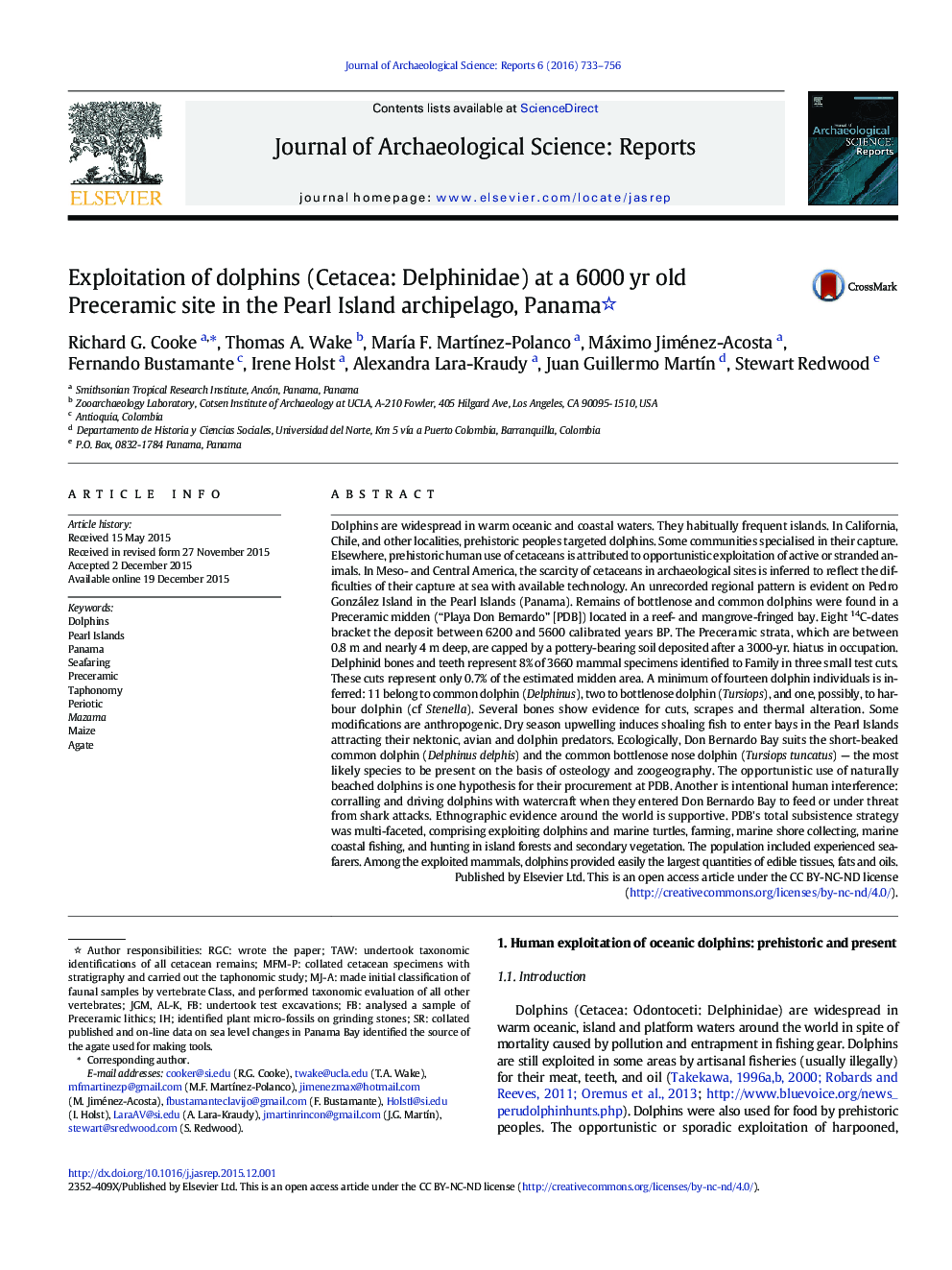| کد مقاله | کد نشریه | سال انتشار | مقاله انگلیسی | نسخه تمام متن |
|---|---|---|---|---|
| 7445540 | 1483937 | 2016 | 24 صفحه PDF | دانلود رایگان |
عنوان انگلیسی مقاله ISI
Exploitation of dolphins (Cetacea: Delphinidae) at a 6000Â yr old Preceramic site in the Pearl Island archipelago, Panama
دانلود مقاله + سفارش ترجمه
دانلود مقاله ISI انگلیسی
رایگان برای ایرانیان
کلمات کلیدی
موضوعات مرتبط
علوم انسانی و اجتماعی
علوم انسانی و هنر
تاریخ
پیش نمایش صفحه اول مقاله

چکیده انگلیسی
Dolphins are widespread in warm oceanic and coastal waters. They habitually frequent islands. In California, Chile, and other localities, prehistoric peoples targeted dolphins. Some communities specialised in their capture. Elsewhere, prehistoric human use of cetaceans is attributed to opportunistic exploitation of active or stranded animals. In Meso- and Central America, the scarcity of cetaceans in archaeological sites is inferred to reflect the difficulties of their capture at sea with available technology. An unrecorded regional pattern is evident on Pedro González Island in the Pearl Islands (Panama). Remains of bottlenose and common dolphins were found in a Preceramic midden (“Playa Don Bernardo” [PDB]) located in a reef- and mangrove-fringed bay. Eight 14C-dates bracket the deposit between 6200 and 5600 calibrated years BP. The Preceramic strata, which are between 0.8 m and nearly 4 m deep, are capped by a pottery-bearing soil deposited after a 3000-yr. hiatus in occupation. Delphinid bones and teeth represent 8% of 3660 mammal specimens identified to Family in three small test cuts. These cuts represent only 0.7% of the estimated midden area. A minimum of fourteen dolphin individuals is inferred: 11 belong to common dolphin (Delphinus), two to bottlenose dolphin (Tursiops), and one, possibly, to harbour dolphin (cf Stenella). Several bones show evidence for cuts, scrapes and thermal alteration. Some modifications are anthropogenic. Dry season upwelling induces shoaling fish to enter bays in the Pearl Islands attracting their nektonic, avian and dolphin predators. Ecologically, Don Bernardo Bay suits the short-beaked common dolphin (Delphinus delphis) and the common bottlenose nose dolphin (Tursiops tuncatus) - the most likely species to be present on the basis of osteology and zoogeography. The opportunistic use of naturally beached dolphins is one hypothesis for their procurement at PDB. Another is intentional human interference: corralling and driving dolphins with watercraft when they entered Don Bernardo Bay to feed or under threat from shark attacks. Ethnographic evidence around the world is supportive. PDB's total subsistence strategy was multi-faceted, comprising exploiting dolphins and marine turtles, farming, marine shore collecting, marine coastal fishing, and hunting in island forests and secondary vegetation. The population included experienced seafarers. Among the exploited mammals, dolphins provided easily the largest quantities of edible tissues, fats and oils.
ناشر
Database: Elsevier - ScienceDirect (ساینس دایرکت)
Journal: Journal of Archaeological Science: Reports - Volume 6, April 2016, Pages 733-756
Journal: Journal of Archaeological Science: Reports - Volume 6, April 2016, Pages 733-756
نویسندگان
Richard G. Cooke, Thomas A. Wake, MarÃa F. MartÃnez-Polanco, Máximo Jiménez-Acosta, Fernando Bustamante, Irene Holst, Alexandra Lara-Kraudy, Juan Guillermo MartÃn, Stewart Redwood,